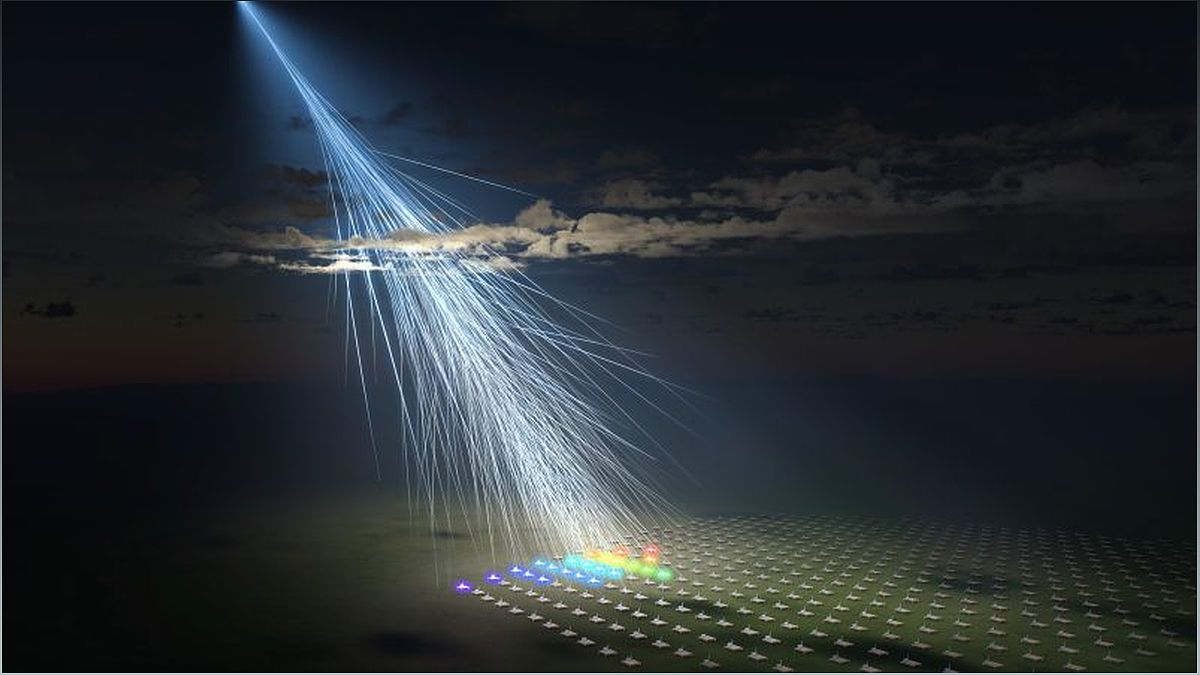In a remarkable cosmic event, a never-before-seen particle known as the Sun Goddess Particle has struck our planet, leaving scientists astounded. This high-energy cosmic ray, named after the Japanese goddess of the sun, Amaterasu, has brought with it a wave of excitement and intrigue. Join me, John Smith, as we delve into the depths of this extraordinary discovery, exploring its origins, energy levels, and the mysteries it unravels. Prepare to embark on a journey into the realm of high-energy astrophysics, as we unravel the enigma of the Sun Goddess Particle.
Unveiling the Sun Goddess Particle
Explore the extraordinary discovery of the Sun Goddess Particle and its significance in the realm of astrophysics.
At the forefront of scientific curiosity lies the Sun Goddess Particle, a cosmic ray that has left researchers in awe. Discovered in 2021, this enigmatic particle carries an unprecedented amount of energy, surpassing anything we have witnessed in the last three decades. Named after the Japanese goddess of the sun, Amaterasu, this cosmic phenomenon has opened up new possibilities in the field of high-energy astrophysics.
As we embark on this cosmic journey, let us delve into the details of this remarkable discovery. How was it detected? What sets it apart from other cosmic rays? Join me as we unravel the mysteries surrounding the Sun Goddess Particle and explore its implications for our understanding of the universe.
The Energy of the Sun Goddess Particle
Discover the mind-boggling energy levels of the Sun Goddess Particle and its comparison to other cosmic rays.
The energy carried by the Sun Goddess Particle is truly astonishing. With an energy level of 240 exa-electron volts, it surpasses our most advanced particle generators by a millionfold. To put it into perspective, most cosmic rays measure under 100 exa-electron volts. Only the Oh-My-God particle, discovered in 1991, surpasses the Sun Goddess Particle in energy, with a measurement of 320 exa-electron volts.
These energy levels raise intriguing questions about the source and origin of the Sun Goddess Particle. How is it possible for a particle to possess such immense energy? What celestial events could have produced it? As we explore these questions, we enter the realm of cosmic mysteries and the frontiers of astrophysics.
The Enigma of Origin
Uncover the mystery surrounding the origin of the Sun Goddess Particle and the baffling absence of identifiable sources.
One of the most perplexing aspects of the Sun Goddess Particle is its elusive origin. Unlike most cosmic rays, astronomers have been unable to pinpoint a specific source for this particle. Its trajectory leads to nothing, and calculations indicate a void with very few galaxies. This raises the question: What astronomical event or object could have produced such a high-energy particle?
As scientists continue to investigate, various theories emerge. Could it be a result of an unknown astronomical event? Or perhaps it originates from an undiscovered celestial object? The search for answers takes us on a journey through uncharted territories of the universe, pushing the boundaries of our knowledge.
Implications and Future Exploration
Explore the implications of the Sun Goddess Particle's discovery and the future of high-energy astrophysics.
The discovery of the Sun Goddess Particle opens up a new chapter in high-energy astrophysics. Its existence challenges our current understanding of cosmic phenomena and beckons us to explore further. Scientists plan to upgrade the Telescope Array, the instrument that detected this particle, to study more ultra-high-energy cosmic rays in the future.
By unraveling the secrets of the Sun Goddess Particle, we may gain insights into the unknown realms of the universe and uncover hidden cosmic events. This discovery paves the way for future breakthroughs and promises to deepen our understanding of the cosmos.

